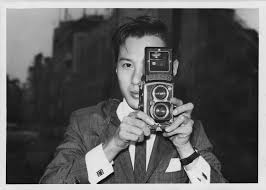
For this weeks post, I wanted to go way to the other side of the spectrum, from the traditional design of Charlotte Moss last week, to brutalism with one of the most intriguing men in architecture, Louis Kahn
Louis Kahn (1901–1974) remains a towering figure in modern architecture, revered for his ability to merge classical monumentality with contemporary form. His work speaks a timeless architectural language—one of light, material, and profound spiritual resonance. This post explores Kahn’s biography, design philosophy, and lasting influence on the world of architecture.
A Brief Biography: From Estonia to Philadelphia
Born as Itze-Leib Schmuilowsky in Kuressaare, Estonia (then part of the Russian Empire), Louis Kahn emigrated with his family to the United States in 1906, settling in Philadelphia. Despite early financial hardships, his artistic talent and academic prowess earned him a scholarship to the University of Pennsylvania, where he studied architecture under Paul Philippe Cret, a Beaux-Arts-trained classicist.
Kahn spent much of his career teaching at the University of Pennsylvania, influencing generations of architects, including Robert Venturi and Moshe Safdie. He worked independently for years before gaining recognition in his 50s, illustrating that architectural greatness is often the result of lifelong refinement.
The Architectural Philosophy of Louis Kahn
Kahn’s designs are marked by a deep reverence for form, light, and materiality. He asked not merely what a building looked like, but what it wanted to be. His style was informed by modernism, but unlike his contemporaries, Kahn embraced solidity and history—fusing ancient principles with modernist restraint.
He believed in the “immeasurable”—that architecture should evoke emotion and existential reflection. Kahn once said, “A great building must begin with the unmeasurable, must go through measurable means when it is being designed, and in the end must be unmeasurable.”
Defining Works: Monuments of Silence and Light
1. Salk Institute for Biological Studies (La Jolla, California, 1965)
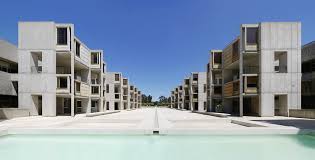
Perhaps Kahn’s most poetic masterpiece, the Salk Institute features symmetrical concrete laboratories framing a courtyard with a thin stream of water leading to the Pacific Ocean. It’s an ode to introspection and serenity, blending science and soul.
2. Kimbell Art Museum (Fort Worth, Texas, 1972)
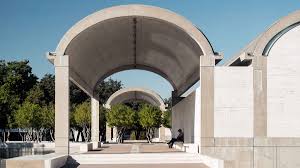
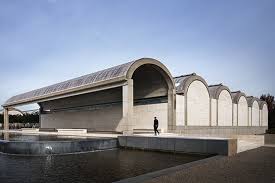
Kahn’s use of natural light here is masterful—vaulted ceilings and hidden skylights bathe art in a soft, indirect glow. The Kimbell remains one of the most admired art museums in the world, merging function and grace seamlessly.
3. National Assembly Building (Dhaka, Bangladesh, 1982 posthumous)
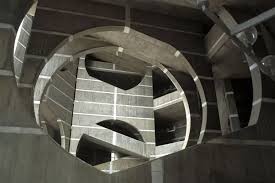
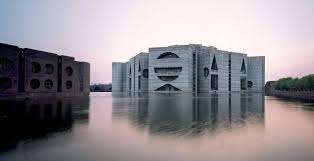
Commissioned by the government of Bangladesh, this building is Kahn’s most monumental achievement. The use of raw concrete, geometric voids, and filtered light create a civic structure that feels at once sacred and stately.
4. Yale University Art Gallery (New Haven, Connecticut, 1953)
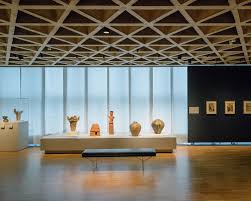
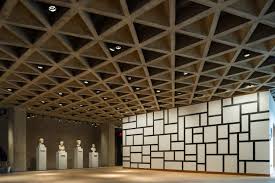
One of his earlier works, this project marked Kahn’s break from traditional design toward the modernist ethos that would define his career. It introduced pioneering concrete and brick detailing that influenced American institutional architecture.
Light, Silence, and the Sacred
What makes Kahn’s work enduring is its emotional gravity. His buildings do not just serve a function—they invite contemplation, like ancient ruins or sacred temples. He treated light as a material, guiding its movement through space as deliberately as stone or concrete. He referred to his voids and structures as “spaces where silence dwells.”
Legacy and Influence
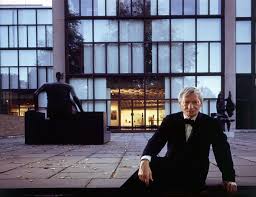
Though Kahn died unexpectedly of a heart attack in 1974, his influence continues through both his built work and his teachings. His son, Nathaniel Kahn, immortalized his father’s legacy in the 2003 Oscar-nominated documentary My Architect, an intimate portrait that revealed both the brilliance and personal complexities of the man behind the monumental walls.
Modern architects like Peter Zumthor, Tadao Ando, and David Chipperfield continue to draw from Kahn’s dedication to silence, simplicity, and spatial purity.
Conclusion: Building for the Ages
Louis Kahn didn’t chase trends—he created spaces that felt eternal. In an age where speed and spectacle often dominate, Kahn’s architecture reminds us that grandeur lies in quietude, and that the most profound spaces are those that speak softly, yet stir something deep within us.
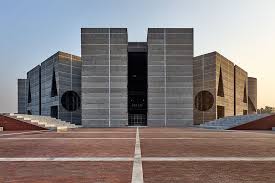
Thanks for reading. Take care. RK 🙂



